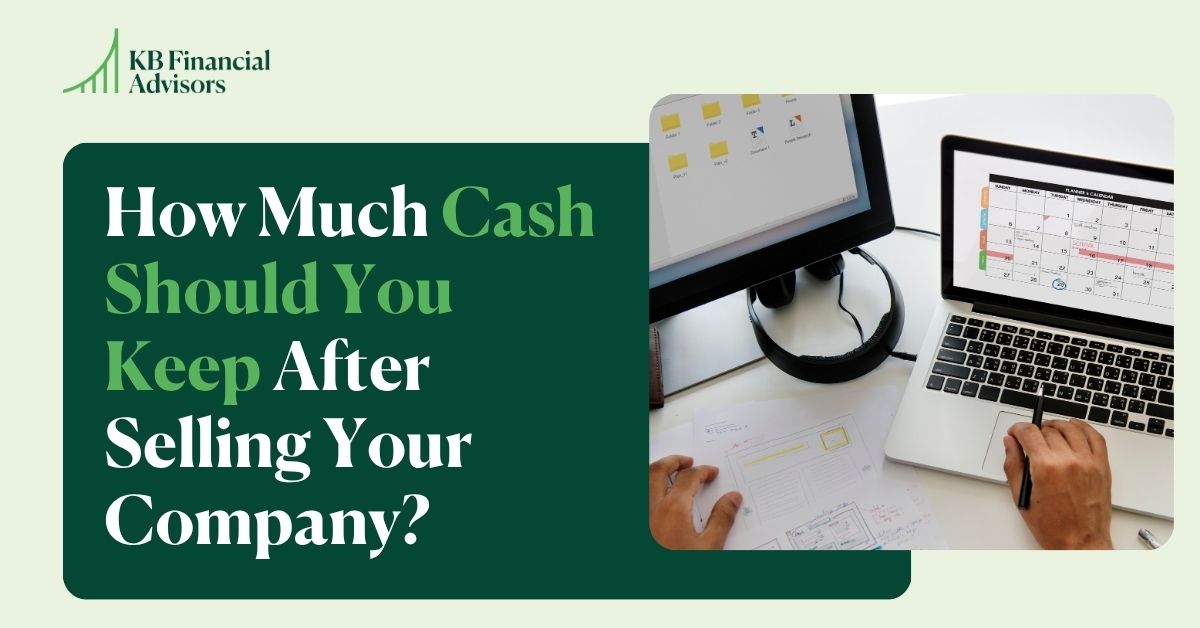As a financial planner, ISO (incentive stock options) are my favorite.
There are so many ways they can flexibly create wealth, especially when our clients have a combination of stock options that also include NSO (nonqualified stock options) and RSU (restricted stock units).
When it comes to tax planning, ISO can be coordinated with things like the AMT (alternative minimum tax), MTC (minimum tax credit), long-term capital gains, and even qualified small business stock.
The only catch is, wrapping your head around the complexities of ISO can be difficult, because there are a lot of rules to remember with them. Not to mention, any time you exercise stock options, you’re placing bets on unpredictable stock prices in the future, and it can take years for it to add tangible value to your financial plan.
ISOs are a marathon instead of a sprint, but that doesn’t mean they’re not exciting to learn about. To help you understand how to use incentive stock options for the best over a period of years, I’ve divided this post into three main time frames:
- Before the IPO
- The year of the IPO
- After the IPO
How to Use Incentive Stock Options Before the IPO
Before the IPO happens… and even before you get wind of an IPO from your company… it’s a good idea to get in the habit of exercising your ISO now.
Starting is usually the hardest part of working with stock options, so if you can get into the habit before the IPO craziness starts, you’ll be in a better position when the IPO comes. You’ll be over the hurdle of not knowing what to do which will help you act faster at the IPO, and exercising now could qualify you for long-term capital gains taxes, which are lower than the short-term capital gains tax a lot of people end up paying with an IPO.

To start, all you need to do is exercise a small number of ISO. You can do this any time, and you can choose an amount that isn’t intimidating.
Once you’re comfortable with that, start planning a pre-IPO strategy. The exact strategy is up to you, but I advise my clients to create plans around these basic guidelines:
- Exercise amount
- Timing
Deciding Exercise Amount
Normally, I tell my clients to exercise as much of their ISO as possible before triggering the AMT. This way, they can still exercise without paying a large AMT bill every year.
Figuring out this amount takes some calculating, but a good financial advisor will help you figure out this threshold.
Sometimes, people will exercise all of their vested ISO, whether it triggers the AMT or not. This is a bold financial move, but can sometimes be the right one.
Best Timing on How to Use Incentive Stock Options
The key to exercising ISO, no matter how much you exercise, is to exercise EARLY.
You want to aim for exercising early in the year, early in your vesting schedule, and even early in your future trading windows (after IPO).
The best timing to exercise ISO is in January or February, for a number of reasons:
- Stock prices tend to be lower at this time of the year, especially if the stock price is increasing.
- This allows you to exercise more ISO without paying the AMT.
- Your taxes on this exercise won’t be due until April of the following year, so you can exercise and hold for a year, qualify for the lower long-term capital gains tax rates, and sell your shares to pay your taxes, including AMT, before the tax bill is due.
Using Incentive Stock Options During the IPO Year
Once the IPO happens, it changes everything.
Before, you had to exercise your ISO without being able to sell and make a profit, but now your time to turn that profit has come. As soon as your IPO is announced, answer these four questions to lay the foundation for your financial planning:
1. What type of IPO is it?
Will your company participate in a Direct Listing, or in a Traditional IPO?
If it’s a Direct Listing, you’ll be able to sell your shares quickly, for a short time after the IPO happens.
If it’s a Traditional IPO, you’ll have to wait to sell until the lock up period is over and a trading window opens. (Lock up periods usually last six months, and the trading windows usually open a few weeks after the lock up periods end.)
2. What dates do you need to remember?
The dates you need to have on your calendar are listed below, along with what you need to know about each of them.
- Cutoff date for QSBS (Qualified Small Business Stock)
Qualified Small Business Stock can be eligible for exclusion from federal income tax, and can be a great thing to sell after an IPO. Not all shares will be QSBS, so you need to know what the cutoff date was for your company.
Usually, a company will share this with you in a letter, where they tell the date after which newly-acquired shares could no longer be considered QSBS. If they don’t give you this information, make sure you ask for the official date.
When you have that date, categorize your share lots: Which ones did you acquire before the cutoff date?
Once you know which lots these are, figure out when the five-year holding period ends so any gains you earn from selling them qualify for the QSBS tax exclusion.
- Black out periods
Just because an IPO happens doesn’t mean you’ll be able to exercise your options or sell your shares at any time. Often, a company will prohibit or discourage the exercise of ISO during a certain time period, especially right after the IPO happens.
Companies use black out periods when they want to do things like process a new valuation, so mark them on your calendar.
- Listing date
When will the IPO go live? And at what share price?
- Lock up expiry
Similar to a black out period, a lot of companies have lock ups directly after an IPO that prohibit you from selling your shares right away. This is so the company doesn’t experience a massive off-loading of shares that tanks the share price.
Make sure you know when the lock up period expires, so you can start selling your shares as soon as you’re able.
- Earnings call
Companies have earnings calls every quarter, which signal the beginning of a new trading window. Your opportunity to sell shares happens after the earnings call, so place these dates in your calendar to help plan your financial strategy.
3. How many share lots do you have?
This is where a lot of people trip up over how to use incentive stock options. A “lot” of shares is a group of ISO shares that were exercised on the same day, at the same FMV, and at the same exercise price.
For example, let’s say in year one, you exercised 100 ISO at a $1.00 exercise price and a $10 FMV on February 1st.
If you exercised again on February 2nd, those shares are in a separate lot. If you exercised twice on February 1st, but the second time the FMV was $11, that second exercise is in a different lot than the first one, because it has a different FMV.
Organize each of your lots in a spreadsheet with their date exercised, the exercise price, and the FMV at exercise.
Then, categorize each lot according to its tax treatment. If the lot was exercised before the QSBS cutoff and has been held for more than five years, it qualifies for qualified small business stock tax treatment.
If you’ve held onto the lot for a year or more, it qualifies for long-term capital gains tax rules.
If you have any lots that you exercised less than a year ago, they’ll be treated as short-term capital gains.
Having this information handy will help you decide what to sell and when, and make sure that you don’t accidentally sell the wrong lots during a trading window.
4. What will you owe in taxes?
As you decide how much ISO to exercise and which shares to sell, you need to know the tax implications so you’re not taken by surprise.
Also, taking the time to do the math on taxes before you act can help you make the best decisions. For example, you might have a ton of double-trigger RSU that get released during the IPO year, skyrocketing you into the highest tax bracket possible. By selling this RSU you’ll be able to pay for your taxes, but being in the highest tax bracket also means that any ISO shares you sell that year will be taxed at a higher rate.
If you wait until the year after the IPO to start selling your ISO shares, you’ll pay less in taxes on those profits, if you’re willing to take the risk of waiting for an uncertain share price.
How to Use Incentive Stock Options After the IPO
Once the dust settles after your IPO and you’ve dealt with the large influx of double-trigger RSU shares and the ISO shares you wanted to liquidate, it’s time to settle into a rhythm of exercising and selling your ISO.
Each person’s situation is different, but the basic outline of what I recommend is to exercise and hold in January and February, and then to sell shares during each trading window as the shares qualify for preferential tax treatment.
When you exercise and hold at the beginning of the year, AMT is less of a worry because you have until the following April to hold for a year, sell at long-term capital gains rates, and make enough money in the sale to also cover the AMT you owe.
Then, when each trading window opens up, you can either sell shares you exercised in the past (or that you exercised before the IPO), or exercise and do same-day sales. (Exercising and selling during the same calendar year is known as a disqualifying disposition, but it can be a good idea to do it any time you think the share price is better now than it will be in the future.)
You can also choose to “hold” your investments and not sell if you want to keep them to qualify for better tax qualifications, or if you think the price will be a lot higher in the future. If you decide to hold off due to wanting a higher price, just make sure you choose a specific price you’d be happy to sell at so you do sell. Otherwise, you could procrastinate forever and never get the cash you need from your stock options to advance your financial goals.
Create Your Year-to-Year ISO Plan
The best way to use ISO is to have a well-organized approach that’s easy to maintain over a number of years. Like I mentioned at the beginning, good ISO investments are a marathon and not a sprint, so making sure you have set dates in your calendar to do things can relieve some of the anxiety around whether or not you’re doing the right thing.
If you need help putting together a solid year-to-year plan on how to use incentive stock options from your company, get in touch with one of our experienced financial advisors. We’d be glad to help you.



